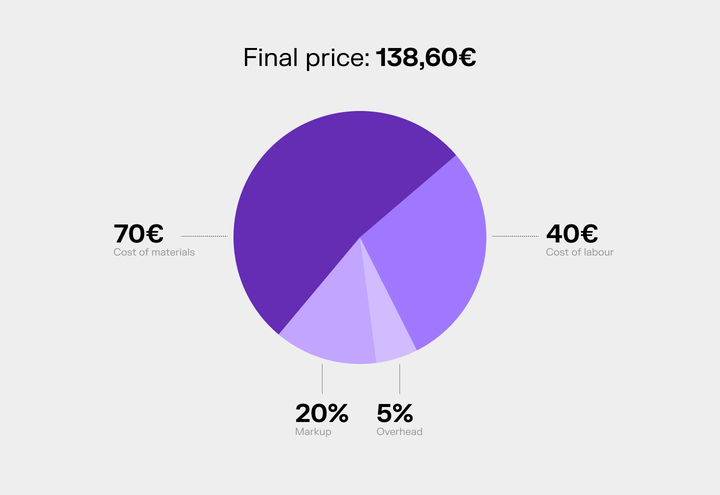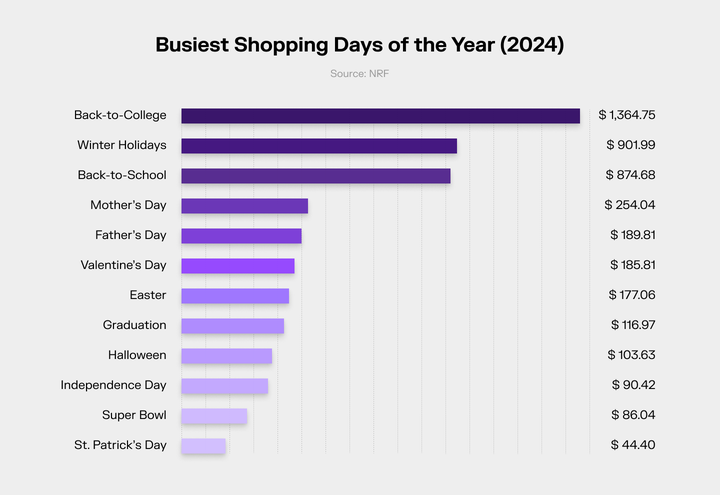Mastering Pricing: The Ultimate Guide for Shopify Stores

Choosing the right pricing strategy is a vital component of running a successful Shopify store, but the large number of options (and opinions) floating around online can make it difficult to find the correct one. That's why we've put together this guide: to simplify the process and help you find an approach that suits your products and audience the best.
Join us as we explore the most popular pricing strategies, provide real-world examples, and offer practical tips to help you make an informed decision and find the perfect balance for your business.
1. Cost-based pricing: a straightforward approach
Let's start with something simple and direct—cost-based pricing is precisely what it says.
Using this method, the price of a product is determined by adding a markup percentage to the total cost of production.
It involves calculating all the expenses associated with creating and selling a product, including materials, labor, overhead costs, etc.
By adding a markup, businesses can ensure that all costs are covered and a decently sized profit is made on each sale.
When to use cost-based pricing:
- If you have a new businesses or are trying to sell unique products with limited market data
- If your products have stable production costs
Example: Let's say you run a Shopify store that sells redesigned sneakers. You would need to calculate the total cost of materials (the sneakers, acrylic paint, embroidery thread, etc.), labor, and overhead, then add a markup of 20% to the final price.

2. Competitor-based pricing: staying ahead of the market
Competitor-based pricing is a strategy where businesses determine their product prices by analyzing and responding to the pricing strategies of their competitors.

It involves continuously monitoring competitor prices and adjusting your own to maintain the advantage.
The goal is to ensure that your pricing is aligned with current market expectations, attracting price-sensitive customers and preventing loss of market share to competitors.
While this is an effective strategy in many scenarios, it's important to work in tandem with your profit margins; if you lower your price too much while trying to outpace your competitors, you can easily end up in the red.
When to use competitor-based pricing:
- If prices play a big role in your market and competition is very high.
- If your product already has well-established market prices.
Example: A small business selling organic skincare products might cross-reference similar products in competitor stores and either try to match the price or sell for cheaper to attract customers.
Tip: Stay on top of your competitors’ prices and adjust yours accordingly. The Shopify app store has many tools in the pricing optimization category that can help you automate the process.
3. Value-based pricing: highlighting your product's worth

Value-based pricing has you set prices based on the perceived value of your products to the customer (as opposed to costs or competitor prices).
For this to work, you need to have a strong understanding of customer needs and preferences so you can highlight all the unique features and benefits that might attract them. This in turn makes them want to pay more.
The goal of value-based pricing is to maximize the amount a customer is willing to spend by emphasizing the value of your product.
When to use value-based pricing:
- Perfect for premium or unique products that offer clear advantages.
- It can be very effective if you're targeting customers who are looking for niche features in a product.
Example: a store specializing in dental hygiene products can utilize a feature, such as fluoride-free toothpaste, to charge more than the costs of production. By targeting customers who value products in this niche, they can justify a premium price for a healthier, more natural option.
Tip: Focus on marketing the unique selling points of your product on your Shopify store. Your potential customers need to know why they're paying a premium.
4. Dynamic Pricing: Adapting to Market Demand
Dynamic pricing involves adjusting product prices in real-time based on key data points like time of day, current demand, customer behavior, and market conditions.
This strategy enables businesses to optimize revenue by capitalizing on fluctuations in demand alongside several external factors that influence a customer's willingness to pay.
By leveraging data and analytics, businesses can set prices that maximize profits during peak periods and offer discounts during slower times, making sure their offerings are always optimized for their market.
When to use dynamic pricing:
- If you sell products that have fluctuating demand, such as seasonal clothing or gift hampers.
- The strategy can be very effective for flash sales or promotions.
Example: A business alters its product prices based on the busiest shopping days of the year.

Tip
Do you want an easy and reliable way to keep track of important ecommerce dates for 2025 and beyond? Check out Sufio’s free downloadable calendar (updated yearly)!
5. Bundle pricing: encouraging larger purchases
As you'd expect from the name, bundle pricing is where you group complementary products from your store into one attractive package. The key is that the final price should be lower than the sum of the individual prices.
This strategy encourages customers to purchase more items than they originally intended, increasing the overall order value.

Bundle types can vary from exclusive, where a product is only available as part of a bundle, to complementary products, or even holiday gift bundles and subscription boxes.
By creating attractive bundles—regardless of the type—businesses can enhance the perceived value for customers. This not only reduces inventory holding costs but also simplifies the purchasing decision for many customers.
When to use bundle pricing:
- Great for increasing the average order value
- Effective for moving slow-selling inventory and promoting related products
Example: A store selling pet products can create a bundle with a harness, lead, and a customized dog tag at a discounted price.
Tip: Ensure the bundled products make sense together and offer a genuine discount to entice customers.
6. Psychological pricing: leveraging consumer behavior

Psychological pricing is a strategy that leverages consumer behavior and perception to influence purchasing decisions.
There are various techniques that can be utilized here. For example:
- Charm pricing: setting prices with odd numbers, like $19.99 instead of $20.00. This creates the illusion of a lower price.
- Anchoring: setting a reference price point that makes the actual price seem more appealing. Say you initially list a product at $30.00, then offer it for a discounted price of $24.99.
By understanding and applying these psychological principles, businesses can make their prices more attractive to buyers, encouraging impulse purchases and increasing sales.
When to use psychological pricing:
- Effective for the launch of new products.
- Useful for promotional sales or clearance events
Example: During a Valentine's Day sale, a handmade jewelry company discounts some products and showcases the original (anchored) price to highlight the savings.
Tip: Tip: Every shopper is different. Businesses should A/B test different psychological pricing tactics to see what resonates best with your customers.
7. Tiered pricing: catering to diverse customer needs

Tiered pricing structures offer different levels of a product or service at varying price points, each with increasing features, benefits, or quantities.
This strategy caters to a broader range of customers by providing options that suit different needs, preferences, and budgets.
By offering clearly defined tiers, such as basic, standard, and premium, ecommerce businesses can meet diverse requirements and sell to a wider audience, enhancing overall customer satisfaction.
When to use tiered pricing:
- Ideal for subscription-based services or digital products
Example: A SaaS company (like Sufio itself) offers basic, premium, and enterprise plans with increasing features and prices to cater to different customer needs.
Tip: Clearly communicate the differences between tiers to help customers choose the right option for their needs.
Streamline your Shopify invoicing with Sufio
Choosing the right pricing strategy is crucial for any Shopify store, but implementing it effectively requires seamless invoicing that adapts to your approach. That’s where Sufio comes in—a smart, compliant, and future-ready invoicing solution designed for modern Shopify businesses.
With Sufio, you can automatically create and send Shopify invoices, credit notes, receipts, and reminders, ensuring your pricing adjustments are reflected accurately and professionally.
Whether you’re exploring cost-based, dynamic, or tiered pricing, Sufio goes beyond basic order printing to streamline your invoicing process. Curious how it fits your strategy? Check out Sufio and see how it can elevate your Shopify invoicing today.
Professional invoices for Shopify stores
Let Sufio automatically create and send beautiful invoices for every order in your store.
Install Sufio - Automatic Invoices from the Shopify App Store